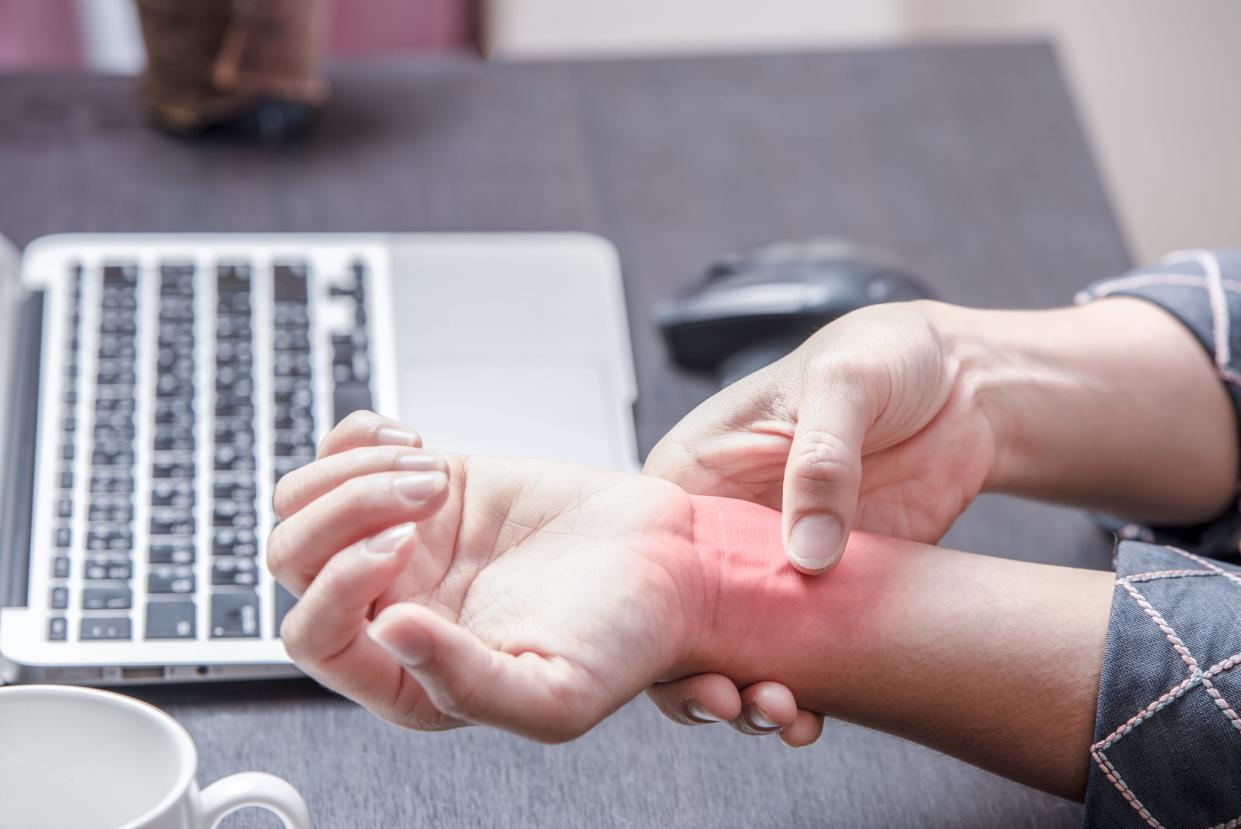A shift in our understanding of carpal tunnel syndrome

Carpal tunnel syndrome is a well-known condition that affects millions of Americans at any given time. It is often attributed to occupational demands, especially in professions that require sustained or repetitive use of the hands and wrists. Because of its prevalence and impact on society, a great deal of energy and expense has been devoted to our understanding of carpal tunnel syndrome.
Carpal tunnel syndrome occurs when the median nerve, a major nerve in the arm, becomes agitated as it traverses through the carpal tunnel at the wrist. The median nerve shares this space with nine tendons, making it especially vulnerable to irritation.
Carpal tunnel syndrome classically causes pain and/or pins and needles in the sensory distribution of the median nerve in the hand. This can include the palm side of the thumb, index finger, middle finger and part of the ring finger. The little finger is usually spared.
In the early stages of the disorder, symptoms are usually only felt at night. Individuals are often awoken from sleep, disturbed by their symptoms, and may shake their hand to gain some relief. As the disorder progresses, symptoms tend to be felt during the day and become more frequent as time goes on. Muscle function of the hand can be affected, and in more advanced cases there may even be atrophy of the thumb pad.
Mainstream treatments for carpal tunnel syndrome tend to be focused at the tunnel itself. Exercises are given. Specific braces are prescribed. Workplaces are modified to avoid extremes of wrist motion. Injections are applied. And in more extreme cases, operations are performed in order to decrease pressure in the carpal tunnel. While a lot of patients get better with these interventions, many remain symptomatic.
Even though we know a great deal about carpal tunnel syndrome because of the number of patients who become chronic, a shift in our understanding of the condition is necessary. It’s not uncommon for our knowledge of certain disorders to evolve as time goes on as paradigm shifts happen all the time in medicine. This was certainly the case with peptic ulcers of the stomach and small intestine, and it completely changed the way the condition was viewed.
Peptic ulcers were once believed to be predominantly caused by stress. This was the worldwide consensus until the early 1980s. Around that time, two Australian physicians began to challenge the accepted view by claiming that ulcers could be caused by a bacteria called Helicobacter pylori. Despite evidence to support this assertion, their theory was ridiculed by both scientists and doctors alike for years.
It wasn’t until one of these two physicians, the now famous (at least within medical circles) Dr. Barry Marshall, took a bold step to prove their point. He drank a concoction containing Helicobacter pylori and gave himself gastritis (inflammation of the stomach), a precursor to peptic ulcers. A stomach biopsy revealed the presence of this bacteria, and his condition was resolved after he took an antibiotic. His experiment was enough evidence for the medical community to begin to shift its understanding of peptic ulcers, and today, the worldwide consensus is that Helicobacter pylori is the most common cause.
This change has dramatically altered the way ulcers are treated, saving countless people unnecessary suffering.
In a similar vein, an important shift should occur in our understanding of carpal tunnel syndrome. While we know that median nerve irritation in the carpal tunnel can cause the classic symptomatic presentation described above, there is often a missing piece that can hinder recovery if not properly addressed.
This missing piece is found in the neck.
The median nerve is made up of contributions from several smaller nerves that originate at five different spinal levels in the neck and upper back. Like streams and creeks that merge to form a river, these small nerves come together and become the median nerve. But unlike streams, creeks and rivers, which flow one way, nerves are like complex highway systems, with signals moving in both directions. Once the median nerve is formed, it courses down the inside of the arm, crosses the front of the elbow, runs through the forearm, and passes through the carpal tunnel before terminating in the hand.
As continuous structures, nerves are vulnerable to irritation at different sites along their course. We also know that nerve irritation in one location can cause symptoms in another. As it pertains to the median nerve, irritation to one or more of its associated spinal nerves in the neck can cause symptoms that resemble carpal tunnel syndrome. Interestingly, the neck may be asymptomatic, with symptoms only occurring in the hand.
Additionally, if the median nerve is already agitated in the carpal tunnel, even mildly, irritation of these spinal nerves can greatly exacerbate the condition. But regardless of whether these nerves are aggravated on their own or in conjunction with median nerve irritation at the carpal tunnel, if the neck is a relevant factor it needs to be addressed.
Failure to account for the neck could be a reason why symptoms remain despite carpal tunnel exercises, bracing, injections, and even surgeries. It’s for this reason that the neck should always be assessed when dealing with carpal tunnel syndrome, especially when local treatments have proven unsuccessful.
The way to determine if the neck is relevant in carpal tunnel syndrome is to see if there is a relationship between neck movements or positions and the signs and symptoms of carpal tunnel syndrome. Ascertaining if this relationship exists is one area that a McKenzie Method assessment really shines. X-rays and MRIs of the neck usually don’t provide useful information in establishing a connection.
While I don’t have carpal tunnel syndrome and am not able to demonstrate the relevance of the neck on myself like Dr. Barry Marshall did with Helicobacter pylori, my experience — and the experience of a growing group of clinicians — indicates that it is often an important player.
Dr. Jordan Duncan was born and raised in Kitsap County and graduated from the University of Western States in 2011 with a Doctor of Chiropractic Degree. He practices at Silverdale Sport and Spine. He is one of a small handful of chiropractors in Washington state to be credentialed in the McKenzie Method.

This article originally appeared on Kitsap Sun: A shift in our understanding of carpal tunnel syndrome

